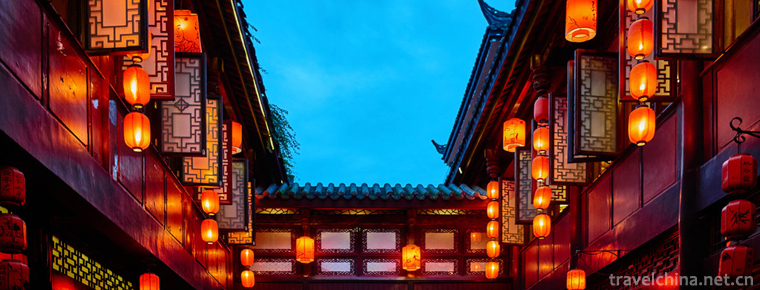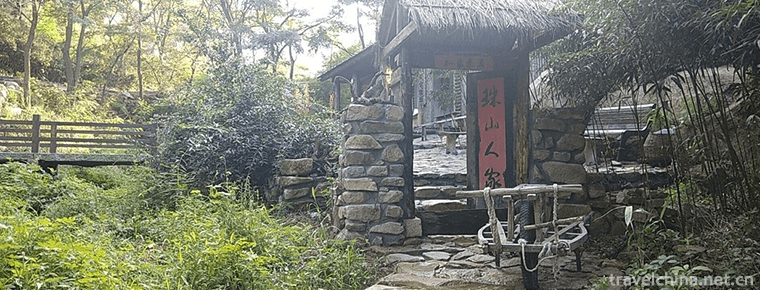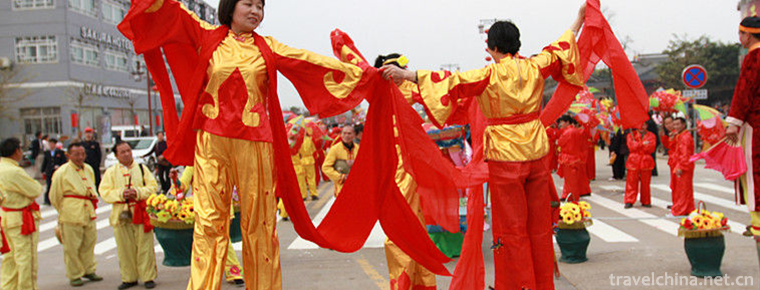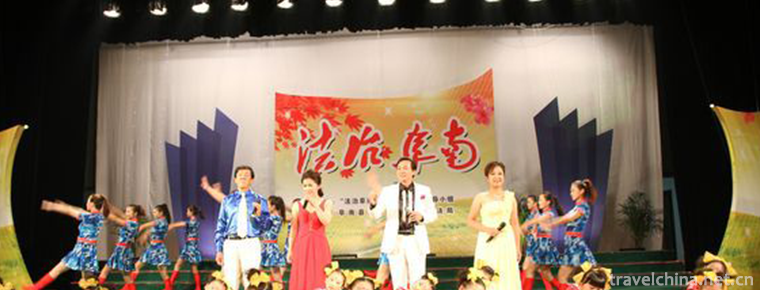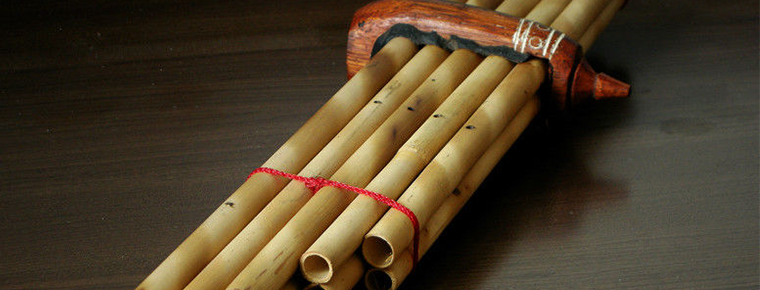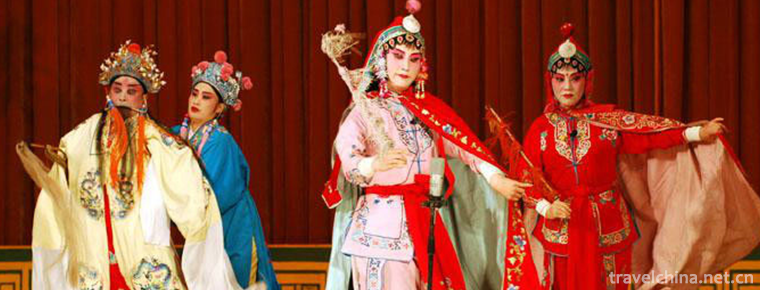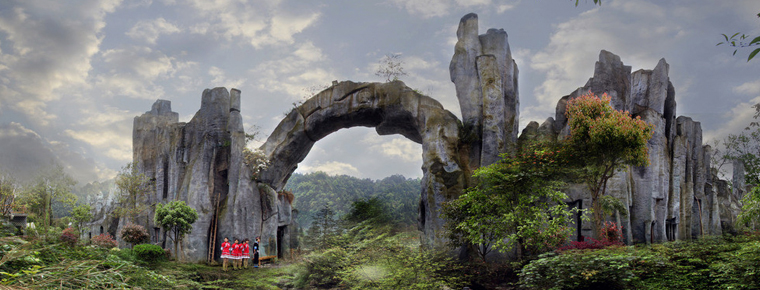Chengdu Yongling Museum
Chengdu Yongling Museum
The Royal Museum of Wang Jian, located at No.10 Yongling Road, Jinniu District, Chengdu, covers a total area of 54000 square meters, and is composed of three parts: cultural relics protection area, comprehensive museum and garden protection area.
Yongling tomb in Chengdu, also known as "Wang Jian tomb", is the mausoleum built by Wang Jian, the founding emperor of Shu state before the Five Dynasties and Ten Kingdoms period (907-967). In 1978, Chengdu Wangjian tomb cultural administration office was officially established; in 1990, Chengdu Wangjian tomb museum was established; in 1998, it was renamed Chengdu Yongling Museum.
Chengdu Yongling museum is the first imperial mausoleum discovered scientifically in China, and the only imperial mausoleum on the ground in China, which is a national secondary Museum.
Historical evolution
In 1979, Wang Jian's tomb was officially opened to the public.
In 1990, the Wangjian Tomb Museum in Chengdu was established.
In 1998, with the approval of the State Administration of cultural relics and the approval of Chengdu Municipal People's government, Chengdu Wangjian tomb museum was officially renamed as Chengdu Yongling Museum.
architectural composition
The Yongling tomb in Chengdu is well preserved. The enclosure of the tomb is hemispherical, with a height of about 15 meters and a diameter of more than 80 meters. The interior is divided into three rooms, i.e., front, middle and back, each room is separated by wooden doors. The tomb room is made up of fourteen red sandstone plains, and 50000 large-scale blue bricks are used outside the stone tomb to build the vertical walls on both sides of the tomb and the double-layer arch on the top of it. This kind of architectual style of longitudinal arch protection structure bears the main pressure of the tomb chamber, which makes the whole tomb show a magnificent and spectacular momentum.
Collection
Yongling and its cultural relics have lofty historical, scientific, cultural and artistic values. It is one of the first batch of national key cultural relics protection units announced by the State Council in 1961.
door of a tomb
The front, middle and back rooms were originally separated by wooden doors, which had been rotten for a long time. Door shop head, decorative pieces, foam nails, etc. still exist. All the bronze wares were made with fine workmanship, indicating that they were gilded with gold. Now the wooden door is a copy.
Color painting
The top of the coupons in the tomb room was painted with azure, and the straight wall was painted with vermilion. On the third coupon, there was a piece of color painting, which was painted in red and green.
Coffin bed
The coffin bed is xumizuo type, with three wooden steps. The coffin on the wooden steps has long been decayed. During the excavation, a large amount of mercury and various burial objects were found in the broken coffin. The coffin bed is surrounded by relief images of Jiyue, flowers and birds, and Yunlong, with exquisite patterns, which were originally colored or gilded. On both sides of the coffin bed, there are half body stone carvings of "Twelve strong men", or "Twelve Gods", to support and lift the coffin bed. It plays an important role in the tomb.
Twenty four musical instruments
The most precious cultural relic of Yongling is the "twenty four acrobatic music" carved in the door of the coffin bed. There are 10 people on both sides of the East and West, and 4 people in the south, all of them are women. Among them, 2 dancers and 22 playing various musical instruments. There are 20 kinds of 23 instruments. Among all kinds of cultural relics of the same period in China, the music and dance scenes and the types of musical instruments are the best. They are very realistic and full of verve. The instrument system belongs to the Kucha music system. The stone carvings vividly reproduce the music and dance scenes of the court banquet in the late Tang Dynasty and the Five Dynasties. They show deep attainments in carving techniques and are of great value to the study of ancient Chinese music history.
Cylinder
This lamp is also called "Wanming lamp". According to the Convention, this jar should be placed at the foot of the tomb owner, that is, the south end of the coffin bed. This seems to be a special case.
Stone bed
The stone bed symbolizes the royal bed before the emperor's death. The front of the stone bed is embossed with dragon and lion shaped beast, and the king's statue is placed in the middle. The front double treasure * is divided into posthumous volume box and mourning volume box on both sides. Posthumous treasures, posthumous volumes and mourning books are all the important national treasures in posthumous rites.
Portrait of Wang Jianshi
The real face of Wang Jian's stone sculpture is a round statue of red sandstone, with a height of 86 cm. It is dressed in a brocade robe, with a head on its head, a jade belt around the waist, and leather boots. It has a long eyebrow and broad catfish. It has a magnificent appearance, wisdom and courage, and is dignified and serene. The description of his manner is lifelike, which is quite consistent with the image of Wang Jian in historical books. In China, the technique of carving is the only one that can be used to depict the real emperors.
Cultural Activity
On March 26, 2016, the Museum held the first season of Yongling salon, Huajian Yaji poetry season.
On March 19, 2016, the foreign exchange exhibition hall of the Museum held the "exhibition of famous oil painters of Russia's Repin Academy of fine arts".
On March 9, 2016, the Museum held the "Chinese dream and dream journey - works exhibition of Chinese contemporary calligraphy and painting masters".
Function value
The 24 musical instruments in Yongling tomb represent the performing scenes of court music and dance in the late Tang Dynasty and Five Dynasties, and have a very high historical position in the history of Chinese music. The unearthed "jade belt", "Shi Bao", "jade book", gold and silver flat off lacquerware and silver products are of high literary and artistic value. These unearthed cultural relics reflect the great economic and cultural achievements of Chengdu in the late Tang Dynasty and the Five Dynasties, and reproduce the history and culture of ancient Chengdu.
Visit information
admission ticket
The cultural relics protection area is 20 yuan / piece, and the comprehensive hall adopts the system of "free of charge and no free ticket". The audience can get the ticket with valid ID card and enter through security inspection.
Children under 6 years old (including 6 years old) or under 1.3 meters in height (including 1.3 meters) are free of charge; children over 6 years old (excluding 6 years old) under 18 years old (including 18 years old) and full-time college students with bachelor's degree or below are given half a ticket; students of primary and secondary schools who make a group appointment visit are free of charge with reservation form.
Opening Hours
8:30-17:30 in the cultural relics protection area and comprehensive hall, 7:00-22:00 in the garden protection area (all year round, tickets will be closed at 17:30).
Traffic information
bus line
The public can take Metro Line 2 to Datong huimen station, walk along Xi'an road to Yongling intersection, or take bus No.42, 126, 127, 341, 54, 30 to Yongling Road station, and then get off at Yongling Road station. The "scenic spot through train" has direct routes.
Self driving
The parking lot of Yongling museum is on the ground. In addition, there are three cave Bridge parking lot and national hotel parking lot in the East and opposite of the museum.
geographical position
No. 10, Yongling Road, Jinniu District, Chengdu.

Chengdu Yongling Museum
-
Jinli Street
Address:No. 231, Wuhou Temple street, Chengdu, Sichuan,China
Views: 153 Time 2018-09-29 -
Uruwati Scenic Area
Uruwati Scenic Area is located in the upper reaches of Karakash River at the southern foot of Kunlun Mountains and in the territory of Langruxiang, Hetian County.
Views: 156 Time 2018-12-22 -
Zhushan National Forest Park
Zhushan National Forest Park is located in Liuhua Po Street Office in the west of Qingdao Development Zone. It is a national forest park approved by the State Forestry Administration in December 2000
Views: 197 Time 2019-03-21 -
Stilts
Stilts, also known as "Stilts Yangko", is a folk dance widely spread throughout the country. It is named for its many feet on stilts when dancing. Stilts have a long history, originating fro
Views: 91 Time 2019-04-30 -
Haizi Opera
Hezi Opera is one of the traditional operas in Anhui Province. It was named after the pronunciation of the word "sea". It is popular in some areas of Anhui and Henan
Views: 225 Time 2019-05-03 -
Lusheng music
Lusheng is one of the core musical instruments in Miao traditional music culture. In the long history of Miao music practice, its cultural function is not limited to universal musical instruments, bec
Views: 111 Time 2019-05-15 -
Mao Qiang
Maoqiang is a local opera popular in Weifang, Qingdao, Rizhao and other places. It was originally a folk humming tune called "Zhou Gu Tune". Legend has it that Maoqiang was named after a nun
Views: 111 Time 2019-05-30 -
Advertising for rent
There are six advertising spaces for each article, first come, first served.
Views: 377 Time 2019-08-30 -
Yamugou scenic spot
Yamugou scenic spot is located on the Bank of Taiping River (a famous scenic spot in Guizhou Province) in Jiangkou County, Tongren City, Guizhou Province, adjacent to Fanjing Mountain (National Nature Reserve, China's top ten famous summer resort).
Views: 165 Time 2020-10-13 -
Zhaojue Temple
Zhaojue temple, located 5 kilometers north of Chengdu, is known as "the first Zen forest in Western Sichuan". It was changed into a Buddhist temple in the Tang Dynasty (627-649) and named Jianyuan temple.
Views: 134 Time 2020-10-18 -
Administrative division of Yibin
Yibin City has 10 county-level administrative divisions (Municipal District 3, county 7), 136 township level administrative divisions (street 14, town 105, township 17). It covers an area of 13271 square kilometers and has a population of 5.52 million. Yibin Municipal
Views: 331 Time 2020-12-18 -
Yibin local specialty
The production of bamboo spring, bamboo carving and bamboo weaving in Yibin city began in Yuan and Ming Dynasty, with excellent materials and local characteristics and life interests. Therefore, he became famous both at home and abroad and entered the court many times.
Views: 414 Time 2020-12-18
